The marble-sized hailstones bouncing loudly off the tinnie roof of the vehicle should have been my first clue as we raced down the rocky backcountry road to get out of the deluge. Or the dark-chocolate color of the upper Salmon River through Stanley, Idaho, a day after the temperature hit 85 and the high snow in the Sawtooths began to almost visibly disappear. Yeah, that should have been the dead give-away.
We were there too soon.
And, yes. Eighty-God-damned-five. On the fifth day of June. At the top of Idaho, where all the rivers run off the shoulders of the high peaks and begin their long journey to the sea. It was unnatural.
But, as things go in the Rockies, it just takes a few hours for things to change, for a perverse climatic course to be corrected, if only temporarily. One day, the Sawtooths stood above us so proud and defiant against a bright blue sky, and the next, they hid from us, shrouded in ominous, dark rain clouds and that shimmered silver under the punishment of a near-constant lightning storm.
I grew up in Colorado. I’m no stranger to early season fishing in the high country. It’s a crap shoot. It could be beautiful and warm, or it could snow a foot. For some reason, the weather never really bugged me. I fished, rain or shine. Snow or sun. Even hail.
But this was downright frightening. At first, as the abnormally heavy rain started to mix in some small-ish ice pellets, I figured we could wait it out. But then the pellets became more like pea gravel. And then all hell broke loose. Marbles of ice started falling, and the temperature dropped a good 10 degrees in mere minutes. What went from waiting out the storm quickly turned into an all-out retreat to save the vehicle, its windows and, frankly, our sanity.
We rushed down the gravel road, charged through a small creek and pushed our way down the sage-dotted hillside until we hit the pavement. We took shelter from the storm beneath a campground pavilion on the banks of the Salmon. The fly rods remained tucked away in their cases, safe in the vehicle.
The idea, of course, was to get above the bulk of the runoff, to find that sweet spot on the river where it meandered clear and cold through willow-lined meadows, before it picked up the silty tributaries and the muck from the many bogs that drain into its flows and turn its waters dark and impossible. We wanted to find where the river slowed around bends and backed up behind beaver dams. And while we found that stretch of river, the fates of the Rockies worked against us, sending storm after thundering storm down the valley like a wave of Brunswick bowling balls cruising along smooth lanes and crashing into stout pins. It was nature’s way of telling us that it was just too soon to be plying these waters for trout, too early to expect cooperation from the weather.
And sometimes you have to heed the will of the mountains. Summer is fleeting in the Rockies. Having lived within their shadow most of my life, I’ve become fond of the notion that when summer finally does arrive in the high country, it’s damn near over. The days chasing wild trout in high-mountain streams are rare days, indeed. A few weeks, really. Sandwiched between spring hailstorms and the first frosts of fall, the days set aside for high-country trout angling are 24-hour treasures to be collected and then spent simultaneously. They don’t keep well. They don’t draw interest. They expire and they’re gone. For good.
So it may seem that arriving too soon is joyless and disappointing, given the fact that flies stayed dry, and line never left the reel. Perhaps, but that’s a bit short-sighted.
The visit, while a fishing failure measured by any instrument, still served as intel—a gathering of vital geographical information that’ll pay off later. No, you can’t save days on these little-visited waters, but you can invest in future endeavors.
Thanks to the rain-soaked poke into the backcountry, I know where the road ends. I know where the river meanders along a willow-lined course. I know where to park the rig on the next trip, and where to wander afoot under sunnier skies. I know, too, where the trout might gather and hold, and where to cast that high-floating attractor that will surely be gobbled up by some naive backcountry native cutthroat.
It’s proof that no fishing trip is wasted, even if the fishing never really happens. Stowed rods, dry reels and flies safe from trouty teeth might not turn most angling cranks, but they turn the wheels between the ears, at least if you’re willing to pay attention. The chance to study water without fishing it is valuable. The chance to save time when the weather is cooperating by scoping out a campsite in a hailstorm or driving that nameless gravel road to the prettiest little stretch of trout water—on a hunch, no less—during unfishable high water is time well-spent.
Too soon? Nah. There’s no such thing.





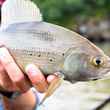


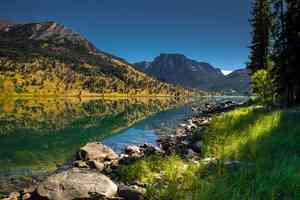



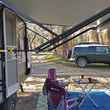



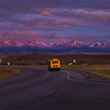
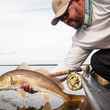



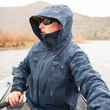
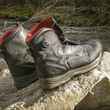




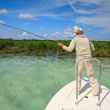
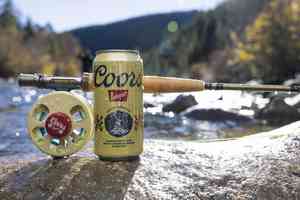

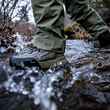
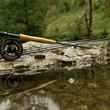
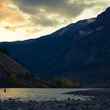
Comments